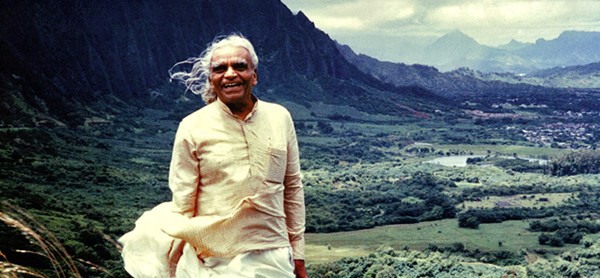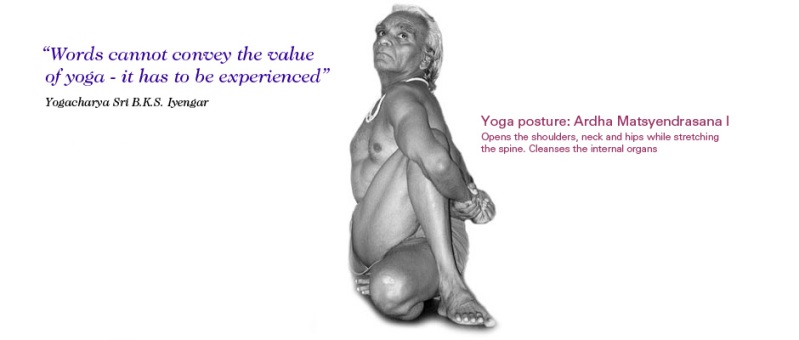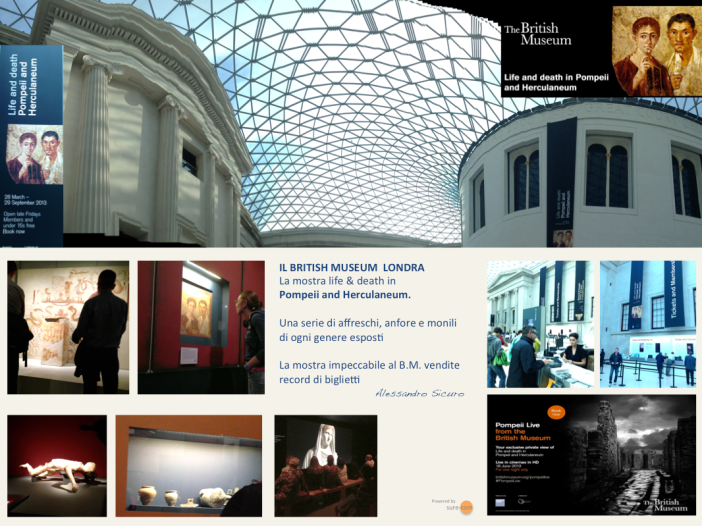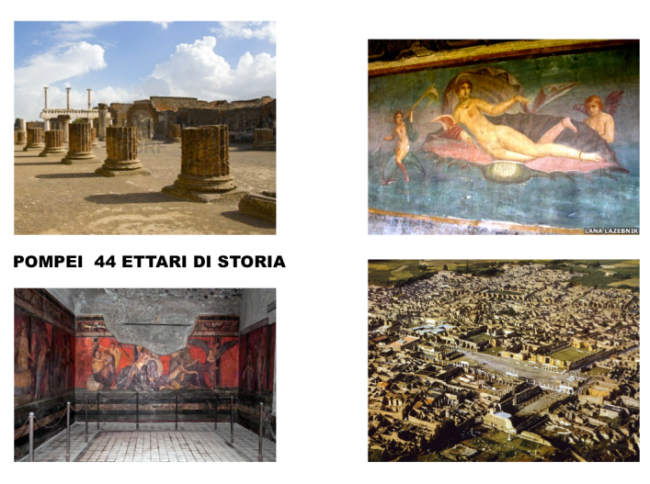transportation
WHAT IS IYENGAR YOGA?
WHAT IS IYENGAR YOGA?
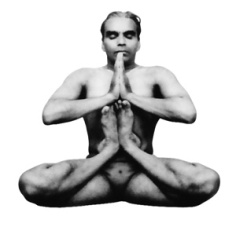 Iyengar Yoga, named after and developed by BKS Iyengar, is a form of Hatha Yoga that has an emphasis on detail, precision and alignment in the performance of posture and breath control. The development of strength, mobility and stability is gained through the asanas.
Iyengar Yoga, named after and developed by BKS Iyengar, is a form of Hatha Yoga that has an emphasis on detail, precision and alignment in the performance of posture and breath control. The development of strength, mobility and stability is gained through the asanas.
Iyengar has systematized over 200 classical yoga poses and 14 different types of Pranayama (with variations of many of them) ranging from the basic to advanced. This helps ensure that students progress gradually by moving from simple poses to more complex ones and develop their mind, body and spirit step-by-step.
Iyengar Yoga often makes use of props, such as belts, blocks, and blankets, as aids in performing asanas (postures). The props enable students to perform the asanas correctly, minimizing the risk of injury or strain, and making the postures accessible to both young and old. Iyengar Yoga is firmly based on the traditional eight limbs of yoga.
Iyengar yoga focuses particularly on three aspects. Correct body alignment allows the body to develop harmoniously in an anatomically correct way so that the student suffers no injury or pain when practicing correctly. As all bodies are different and people have different weaknesses and strengths. Props were developed for use in Iyengar yoga; and are objects like wooden blocks, chairs, blankets and belts that help one adjust or support oneself in the different postures so that one can work in a range of motion that is safe and effective.
An added benefit is that although the therapeutic aspects of asanas and pranayama have been known for centuries, the emphasis on correct anatomical
alignment and methods of working have refined the therapeutic aspects of Yoga. Thus practice of Iyengar yoga will often result in eliminating aches and pains, improve posture etc. but Iyengar Yoga can also be used to treat many ailments, including extremely serious medical conditions, under the supervision of a suitably experienced teacher. The other two key aspects of asana practice in the Iyengar system are correct sequencing in which there is a powerful cumulative effect achieved by practicing asanas in particular sequences. The concept of timings means postures are held for considerable lengths of time to let the effects of the poses penetrate deeper within the individual
Pranayama is started once a firm foundation in asana has been established as physically the student requires the alignment, flexibility, lung capacity and training necessary to sit and breathe correctly while practicing. Pranayama gives numerous physical benefits including toning the circulatory, digestive, nervous and respiratory systems, activating the internal organs and creating a feeling of energy and calmness. Equally importantly it also brings the mind and senses under control and makes the individual fit for the experience of meditation.
 One may, get the impression that Iyengar yoga is just gymnastics and deep breathing or only Asana and Pranayama. This is incorrect. Asanas and Pranayama are merely used as the tools with which to master all 8 aspects of Astanga yoga. Mastery of the body is the gateway to mastery of the mind. Consider the following: The whole human being from the outermost skin to the innermost being (or soul) is interconnected. For example, if the body is ill, the mind also becomes depressed, lethargic and bad tempered and if the mind is stressed the body becomes tense. The intensity and depth to which Iyengar yoga is practiced on the physical level does affect and change the mind and spirit.
One may, get the impression that Iyengar yoga is just gymnastics and deep breathing or only Asana and Pranayama. This is incorrect. Asanas and Pranayama are merely used as the tools with which to master all 8 aspects of Astanga yoga. Mastery of the body is the gateway to mastery of the mind. Consider the following: The whole human being from the outermost skin to the innermost being (or soul) is interconnected. For example, if the body is ill, the mind also becomes depressed, lethargic and bad tempered and if the mind is stressed the body becomes tense. The intensity and depth to which Iyengar yoga is practiced on the physical level does affect and change the mind and spirit.
In doing yoga asanas the whole body and mind must learn to become involved. One has to spread one’s awareness to the smallest parts of the body simultaneously so the mind becomes alert, attentive and sharp. One learns to breathe smoothly deeply and evenly so one’s energy (prana) can flow without obstruction and one learns to make the mind quiet, passive and receptive thus promoting a meditative state of mind. This makes the body fit for Pranayama.
Through asanas one also learns an awareness and application of ethics – Yama and Niyama. For example one of the Niyamas is sauca (Purity). An example:  Because yoga builds up a very sharp awareness of the state of the body and mind, one becomes very aware of ones state of health and begins to nurture it. So after too much eating and drinking, the body suffers and the mind becomes dull. As one spends more and more time practicing yoga, the obvious contradiction and self-destructiveness becomes more difficult to reconcile and one begins to moderate ones eating and drinking, leading to a more pure lifestyle. Another example of this is the Yama of non-violence. Although superficially Yamas are social ethics and Niyama personal disciplines, both can be applied equally to any situation such as society or the physical body. While doing Parsvakonasana one may experience pain in the front knee and assume it is at fault for causing one discomfort. But in reality the knee is causing pain because it is forced into an unnatural position by the thigh and buttock working lazily. So the buttock and thigh do the violence by being lazy but we blame the knee. The remedy is to make the buttock and thigh work correctly then the knee can function properly and the discomfort disappears. As one’s sensitivity in the postures increases one also realizes that not only the buttock and thigh but all parts of the body to a greater or lesser extent have had their role in the violence to the knee. This thinking can be applied to society where it is easy to find the roots of violence in unhappy homes, childhood neglect and poor education.
Because yoga builds up a very sharp awareness of the state of the body and mind, one becomes very aware of ones state of health and begins to nurture it. So after too much eating and drinking, the body suffers and the mind becomes dull. As one spends more and more time practicing yoga, the obvious contradiction and self-destructiveness becomes more difficult to reconcile and one begins to moderate ones eating and drinking, leading to a more pure lifestyle. Another example of this is the Yama of non-violence. Although superficially Yamas are social ethics and Niyama personal disciplines, both can be applied equally to any situation such as society or the physical body. While doing Parsvakonasana one may experience pain in the front knee and assume it is at fault for causing one discomfort. But in reality the knee is causing pain because it is forced into an unnatural position by the thigh and buttock working lazily. So the buttock and thigh do the violence by being lazy but we blame the knee. The remedy is to make the buttock and thigh work correctly then the knee can function properly and the discomfort disappears. As one’s sensitivity in the postures increases one also realizes that not only the buttock and thigh but all parts of the body to a greater or lesser extent have had their role in the violence to the knee. This thinking can be applied to society where it is easy to find the roots of violence in unhappy homes, childhood neglect and poor education.
Pranayama is the essential prerequisite for correct true meditation. It is theoretically possible to achieve a meditative state of mind by merely sitting and concentrating, in practice it is not possible for 99% of people. In meditation the mind is absolutely silent but razor sharp. Many people go to meditation classes, for many years even. But few achieve this state of consciousness; the mind has too many “portals.” It is like a sieve full of water. Whichever hole you block, water continues to pour out of the rest. The mind is too subtle, cunning and restless to be controlled and made still. Therefore, Pranayama is recommended as the breath is used to still the mind. Smooth subtle and controlled breathing is far easier to master than the mind and when the breath becomes smooth and steady so does the mind. Then one can learn to withdraw the senses from external objects and cultivate the state of mind where the experience of meditation can come.
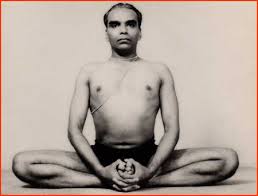 Meditation is a state of mind that cannot be learnt and thus the practice of sitting and attempting to meditate is not a guarantee of results in itself. Rather the foundations of self-culture have to be built through practicing the first five disciplines of yoga. The experience of meditation comes when the student is ready.
Meditation is a state of mind that cannot be learnt and thus the practice of sitting and attempting to meditate is not a guarantee of results in itself. Rather the foundations of self-culture have to be built through practicing the first five disciplines of yoga. The experience of meditation comes when the student is ready.
This leads to another keynote of Iyengar yoga: meditation in action. If one can meditate on a flame, grain of rice or other subject, why not meditate on the posture one is performing? So, as a student does yoga postures the mind learns to become aware of the different parts of the body. At first the mind moves from part to part but with training learns to become absorbed in all parts of the body evenly at the same time. One learns to refine one’s awareness and penetrate deeper into the body in order to achieve more accurate and thus effective and comfortable postures. So the mind is trained to achieve a meditative state of being. Although pranayama is the real key to preparation for meditation, the progress made is applicable to asanas which can be practiced to such a degree of refinement that one meditates in the posture.
In sum, the Iyengar method of Yoga may be said to define itself as different from other styles of Yoga by 3 key elements, namely technique, sequence and timing: (1) Technique means that in practice one learns ever finer adjustments in the alignment of how one performs one’s asana and pranayama; (2) Sequence refers to the sequences in which asana and pranayama are practiced. For example, by varying which postures are practiced after which, the mental and emotional effects of the practice can be intensified in a manner not otherwise possible in order to bring about changes to the whole being including ones spiritual evolution; and (3) Timing refers to the length of time spent in postures or pranayama. Postures cannot be done swiftly or without awareness. It takes time to move into a posture and become stable. When this has been achieved then one remains stably for some time to intensify the depth of the posture and so extract its benefit. Otherwise the potential effects and benefits remain small compared to what is possible.
Kathy Kiefer
At the British Museum in London to visit Pompei and Ercolano…
These days I have been following the evolution of the remote search of Alessandro Sicuro, the Italian blogger who always follows very closely these events on the mismanagement of the Italian cultural and artistic heritage. I work with this agency (sure-com) for almost a year, I read this article today and I decided to publish it on my blog, because I would like these things to let everybody know. It ‘a shame that all this happen in a country that has an artistic capital cilturale so awesome and yet can not make it productive. And ‘as bad as the beautiful country Italy to borrow for free, and his goods to other countries more’ rich in her strenuous. But it is not strange that the British accept the fact that it happened is incomprehensible is: who are those directors who give freely of these priceless treasures of all Italians?!
Kathy Kiefer
now the article of Alessandro Sicuro: ↴BRITISH MUSEUM
WHY DOES ITALY FAIL TO EXPLOIT THE ARTISTIC SOURCE OF THE HIGHEST GAIN IN OTHER COUNTRIES?
BECAUSE THE ITALIAN STATE LENT FREE HISTORICAL ARTIFACTS OF POMPEII AND HERCULANEUM TO BRITISH ENGLISH?
IF THE EDITORS AND MANAGERS OF THE BRITISH ARE SO GOOD AT MAKING SO MUCH MONEY, WHY NOT PROPOSE THE ONGOING MANAGEMENT OF THE ENTIRE CITY OF POMPEII AND WHY NOT OF ITALIAN MUSEUMS!?
Following the publication on my blog of an article on Italian art, (http://wp.me/p2kXuA-1fn), and its untapped potential, compared to European museums, including the British Museum and the exhibition on Pompeii and Herculaneum. Reading rather disturbing things in the newspapers a few days ago, I went to the English capital to ensure State-of- the-art in person, and get a better understanding of the situation
The mystery on the critical conditions in which the world of Italian culture and art has become increasingly dense and dramatic, faced with the realization that there are neither the means nor a true political will and entrepreneurial skills to manage those riches, as well as safeguard and then exploit this huge artistic heritage that makes our country unique in the world. My hope then is to make a small contribution to this debate, to send a message that can help reflect on how “sviliamo our potential” and especially about our limits: often we find pleasure in self-referential rhetoric of “Italy, the most beautiful country in the world,” and our presumption leads us to not promote truly this wonderful heritage, which could be a source of employment for many young people and of income for the State and the community.
The question I asked myself when I read that the British Museum could do 11 million pounds from March thru September 2013, with little more than 200 historical artifacts of Pompeii and Herculaneum “provided for free by the Italian State,” is this:
– why for free?
– because they can make these profits and us not?!
In those same months in fact –exactly from March to September, as I said in a previous article– a huge crowd of people has visited and is continuing to visit the exhibition “Life and Death in Pompeii and Herculaneum”, at the British Museum in London. After being at the show, beautiful for that matter, I asked myself some questions that perhaps deserve research and in-depth replies – and it is for this reason that this article is being written.
The price of a ticket to the exhibition is of 15 £. The Museum is selling 500 tickets daily and sells out all the tickets …! along with an unspecified number of tickets booked. Judging by the amount of people, tickets with reservations are at least 500 every hour, which means approximately 4000 tickets per day at least (that is constantly full, there are no doubts, I checked in person), I confirm that is already all sold out (guest from time). Oh yes, because unlike Pompeii, you can purchase tickets on-line, giving way to individuals and tour operators put in ready-made tour packages for their clients this opportunity, which is not possible in Pompeii …
I did a bunch of accounts, (these days there is also needed).
That Italy lacks money and work, especially for young people. So why is it that Italy can submit material that is so valuable to the British to make a lavish profit without obtaining at least half?
We see the figures: look at the size of the gift made to British aristocrats, tickets cost £ 15, daily sales unit 4000, duration of the exhibition 180gg.
Then, £ 15 x4000x180 days = £ 10,800,000, which are obviously the proceeds from the sale of the catalogues and various gadgets connected to view (atleast the same digit).
Now, from the same interview in Corriere, we learn that the beautiful pieces on display in London were “provided for free by the Italian State” because it “would appear as the rag-a-muffin state initiative, would be really bizarre and demeaning to pay exhibits abroad”. Then however, anywhere, the Museum of Riace, complains about the lack of staff and funds, while France, not exactly in rags, has implemented the same operation with Abu Dhabi, by restoring the balance – and the Palace – Louvre, (remember that the Paris Museum collects as all Italian museums put together?!).
Many Italians and plus Myself would like to figure out who decided on this donation? There were perhaps of the palaces in Italy? In this country we have beautiful palaces, in excellent condition, as Florence (Palazzo Strozzi, Palazzo Pitti. Or Roma, scuderie del Quirinale, or in Caserta, in order not to make too many miles, in splendid Palaces, the Castello Sforzesco in Milan). How can anyone be reminded of anything like that?
We are waiting for answers, thanks …
Alessandro Sicuro
SHOPPING
SHOPPING
Why do people shop? Is a response to some inner need to spend money (even if they shouldn’t be spending the money)? Do they actually want to make some sort of statement (be it some sort of fashion statement or other)? Should price and/or quality make that much of a difference of what is sought or to be purchased? Is a brand name or designer always better? Why would someone settle for a knock-off of an item? It can be an insight to the person let alone personal style and values. But sometimes, I think, that bigger or more expensive isn’t always better. There are those that settle for even a knock-off (a fake Louis-Viton, Fendi, etc.) Know deep down they have “a designer” but for far less than what the original costs while the expert can spot a fake barely a mile away.
 A retailer or shop is a business that presents a selection of goods or services and offers to sell them to customers for money or other goods. Shopping is an activity in which a customer browses the available goods or services presented by one or more retailers with the intent to purchase a suitable selection of them. In some contexts it may be considered a leisure activity as well as an economic one. The shopping experience can range from delightful to terrible, based on a variety of factors including how the customer is treated, convenience, and mood. The shopping experience can also be influenced by other shoppers. A report that came out in 2000 asserts that women purchase 80% of all consumer goods and influence 80% of health-care decisions. But this begs the question how well informed and educated are these women on the things to purchase? Many times when a woman goes shopping either by herself or with a family member or friend a sales person will stop at nothing to make the sale, even resorting to sneaky or underhanded methods. And the consumer may not know what they walked into and leaves feeling that they have gotten the best price for something they want. Doing your homework prior to going out looking for something is important otherwise you can get taken.
A retailer or shop is a business that presents a selection of goods or services and offers to sell them to customers for money or other goods. Shopping is an activity in which a customer browses the available goods or services presented by one or more retailers with the intent to purchase a suitable selection of them. In some contexts it may be considered a leisure activity as well as an economic one. The shopping experience can range from delightful to terrible, based on a variety of factors including how the customer is treated, convenience, and mood. The shopping experience can also be influenced by other shoppers. A report that came out in 2000 asserts that women purchase 80% of all consumer goods and influence 80% of health-care decisions. But this begs the question how well informed and educated are these women on the things to purchase? Many times when a woman goes shopping either by herself or with a family member or friend a sales person will stop at nothing to make the sale, even resorting to sneaky or underhanded methods. And the consumer may not know what they walked into and leaves feeling that they have gotten the best price for something they want. Doing your homework prior to going out looking for something is important otherwise you can get taken.
I believe in shopping around, comparing prices to get the correct thing at the best possible price for what I am looking for. Even if it  involves “Window shopping” at first. This refers to the browsing of goods by a consumer with no intent to purchase, or to plan a later purchase. Something I was taught by my parents, and I believe true today is that if you want something bad enough (like a radio, television, etc.), you should put the money away for it. A child could always save money from their allowance, earn money by babysitting, rake leaves, shovel snow, offer to help neighbors, do chores and so much more.
involves “Window shopping” at first. This refers to the browsing of goods by a consumer with no intent to purchase, or to plan a later purchase. Something I was taught by my parents, and I believe true today is that if you want something bad enough (like a radio, television, etc.), you should put the money away for it. A child could always save money from their allowance, earn money by babysitting, rake leaves, shovel snow, offer to help neighbors, do chores and so much more.
But why with money, does it necessitate to have the most expensive or luxury items? Is it to say “look at me, I can afford the best “or are you saying something else? Having money and good taste aren’t always the same thing.
Something that can be enjoyable and fun to so be fairs and markets which have a long history that started when humans felt the desire to exchange goods and services. People would shop for goods at a weekly market in nearby towns. Then shops began to be permanently established. Shops were specialized, e.g. a bakery, a butchery, a grocer. Then supermarkets appeared. Sometimes peddlers and ice cream trucks pass through neighborhoods offering services and goods.
Even yard sales, farmer’s markets, and estate sales have been growing in popularity over the years. They also a good way to get quality items at a substantial savings for the consumer, but the buyer has to be open to what is being offered and not just say “I don’t care what is being sold I will buy anything.” It takes a great deal of time, effort and patience to find just the right thing.
Stores are divided into multiple categories of stores which sell a selected set of goods or services. Usually they are tiered by target demographics based on the income of the shopper. They can be tiered from cheap to pricey.
 Why the need to have a “label” on items? Is it a status thing or just a way to show how shallow a person can be? I’m not knocking good quality or name items, but I find it difficult to enjoy having something so nice, when one can afford things no matter what the cost and others among us have to struggle for everything they have or hope to get. I have excellent taste (and have many good quality things such as Waterford Crystal and Lenox) and appreciate the finer things, but that doesn’t mean that I have to have a mansion or some high priced home to show-case things and flaunt things. It can be better to get good quality for a fraction of the cost even if it is not top name designer (or find good quality at reduced prices at a discount or outlet store).
Why the need to have a “label” on items? Is it a status thing or just a way to show how shallow a person can be? I’m not knocking good quality or name items, but I find it difficult to enjoy having something so nice, when one can afford things no matter what the cost and others among us have to struggle for everything they have or hope to get. I have excellent taste (and have many good quality things such as Waterford Crystal and Lenox) and appreciate the finer things, but that doesn’t mean that I have to have a mansion or some high priced home to show-case things and flaunt things. It can be better to get good quality for a fraction of the cost even if it is not top name designer (or find good quality at reduced prices at a discount or outlet store).
Some shops sell secondhand goods. Often the public can also sell goods to such shops. In other cases, the public donates goods to  these shops, commonly known as thrift or charity shops. Consignment, thrift or charity shops are excellent places to find good merchandise, while helping out the community. In antique shops, the public can find goods that are older and harder to find. Shopping frenzies are periods of time where a burst of spending occurs—typically near holidays in the United States, where Christmas shopping is seen as biggest shopping spending season, starting as early as October and continuing until after Christmas.
these shops, commonly known as thrift or charity shops. Consignment, thrift or charity shops are excellent places to find good merchandise, while helping out the community. In antique shops, the public can find goods that are older and harder to find. Shopping frenzies are periods of time where a burst of spending occurs—typically near holidays in the United States, where Christmas shopping is seen as biggest shopping spending season, starting as early as October and continuing until after Christmas.
Some religions regard such spending seasons as being against their faith and dismiss the practice. It gives a new meaning to making homemade items to give as gifts. Many question the over-commercialization and the response by stores that downplay the shopping season often cited in the Christmas controversy or war on Christmas.
Kathy Kiefer
BANKS / INVESTMENTS
The importance of monitoring their investments and follow them constantly with a good consultant
In a day and age when banks are merging or even closing down, it is hard to fathom an institution that gives customers a terrible time when it comes to investing their money and ultimately wanting to either withdraw or transfer their funds somewhere else where they could get a far better return on their investment. I also feel this can be said of credit unions (a slightly different type of banking institution), where management might be sneaky and try to trap you into keeping your investment with them even if it’s in your best interest to move the investment elsewhere.
But you might ask (if you didn’t know already) what is a credit union? One financial institution is non-profit and very much involved with the local community, while the other has to maximize their fees to please stockholders and other investors.
But can any banking or financial institution be totally trusted with any type of account that one could have or even fathom having? I have my doubts about this. From personal experience I have been given bad information regarding an account and the investments that were started with my funds. I had been led to believe that I could access the money if needed and move it somewhere where it could earn a greater return on the investment. But in reality I am not able to even move the money until when it matures at different times. Otherwise if I were to do anything now, I would get hit big on taxes… That is what I am being told. And I don’t believe this is sound business advice. I think that if you find a place where you get a better return on the investment you should be allowed to move the funds there without fear of any sort of penalty regardless of what the original location might tell you.
I have my doubts about this. From personal experience I have been given bad information regarding an account and the investments that were started with my funds. I had been led to believe that I could access the money if needed and move it somewhere where it could earn a greater return on the investment. But in reality I am not able to even move the money until when it matures at different times. Otherwise if I were to do anything now, I would get hit big on taxes… That is what I am being told. And I don’t believe this is sound business advice. I think that if you find a place where you get a better return on the investment you should be allowed to move the funds there without fear of any sort of penalty regardless of what the original location might tell you.
 For example, the credit union’s philosophy promotes thrifty saving that can improve the lives of its members. They are usually owned locally and consist of people from local employers, churches, schools, and communities. However, a commercial institution is far different, since their focus is state-wide and they commonly aim for national customers to achieve profitability and meet their goals.
For example, the credit union’s philosophy promotes thrifty saving that can improve the lives of its members. They are usually owned locally and consist of people from local employers, churches, schools, and communities. However, a commercial institution is far different, since their focus is state-wide and they commonly aim for national customers to achieve profitability and meet their goals.
They would have you believe that it’s good to belong to one because they offer many perks and they aim to please (not always true). You might find a better interest rate than at a commercial institution.
In addition, the differences also matter when it comes to the principles of each bank. It may be hard to find a free account today, but the community establishments seem unchanged and they offer more savings. It’s good to shop around, but its best to join one if you can. Another difference is that you might find a lower interest rate with a credit union.
When a person is seeking to open an account at either type of institution it is always wise to shop around, do your homework to find out which is the correct place for you depending on what services the institution offers. And not just be taken in just because the bank is convenient for you or because someone you know might be happy with the bank. As the saying goes ‘buyer beware.” There are hidden charges or fees that you might not be told of when setting up an account or checking out bank charges and find out only when it is too late at either place of business that you have been ripped off (in a manner of speaking). And if you dare to confront the bank on the charges they try to back-peddle and inform you that you were informed at the time the account was set up which is not always the case.
which is the correct place for you depending on what services the institution offers. And not just be taken in just because the bank is convenient for you or because someone you know might be happy with the bank. As the saying goes ‘buyer beware.” There are hidden charges or fees that you might not be told of when setting up an account or checking out bank charges and find out only when it is too late at either place of business that you have been ripped off (in a manner of speaking). And if you dare to confront the bank on the charges they try to back-peddle and inform you that you were informed at the time the account was set up which is not always the case.
Even if you have an account open that could be classified as a fund for retirement or other and the interest rate on them are low, they should be allowed to be transferred somewhere so that the return on the investment would be greater and the person not given grief over wanting to move the account before the investment has matured. I know that for a fact that with a financial institution where I had trusted funds years ago based on the recommendation of someone rather knowledgeable (and has since passed away) and the particular institution is proving difficult in giving me access to the money which is rightfully mine so that an effective transfer to higher yield account somewhere else can be done.
 I would venture to say to take someone with you, such as a lawyer or a person you trust that is very savvy in the world of finance so that you would receive the best advice possible prior to making any rash decision or get backed in to a corner before making any final decision. This way your money is protected and you are able to get the best return on your investment. I am fortunate now, as I have someone trusted and extremely knowledgeable in this matter helping and guiding me. I am more confident now than before that with this expertise/guidance that I have found, I will be much more successful than I ever dreamed of.
I would venture to say to take someone with you, such as a lawyer or a person you trust that is very savvy in the world of finance so that you would receive the best advice possible prior to making any rash decision or get backed in to a corner before making any final decision. This way your money is protected and you are able to get the best return on your investment. I am fortunate now, as I have someone trusted and extremely knowledgeable in this matter helping and guiding me. I am more confident now than before that with this expertise/guidance that I have found, I will be much more successful than I ever dreamed of.
It is also becoming more and more apparent that many people that are involved in the banking and/or financial institutions today really  have no business working there as they lack the proper scruples, training, knowledge and so much more. Yes, there are some good, decent people in this industry, but on a whole far too many of them go into this profession and take advantage of the weak and vulnerable among us in order to make a profit and will stop at nothing to continue to exploit the least among us (including those that come from other countries and may not be able to fully understand the language or what they are being told).
have no business working there as they lack the proper scruples, training, knowledge and so much more. Yes, there are some good, decent people in this industry, but on a whole far too many of them go into this profession and take advantage of the weak and vulnerable among us in order to make a profit and will stop at nothing to continue to exploit the least among us (including those that come from other countries and may not be able to fully understand the language or what they are being told).
Kathy Kiefer
PRIMAVERA = SPRING
La Primavera. Sandro Botticelli, Firenze
PRIMAVERA = SPRING
Spring is Here!
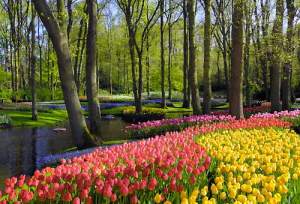 Spring is such an exciting time for a gardener. Flowers are popping up everywhere; garden plans are on the forefront of the mind; the daylight time is lengthening; and birds are singing, and preparing their nests for the arrival of their offspring.
Spring is such an exciting time for a gardener. Flowers are popping up everywhere; garden plans are on the forefront of the mind; the daylight time is lengthening; and birds are singing, and preparing their nests for the arrival of their offspring.
If I were to try and sum up spring in a single word it would be rebirth – a rebirthing of perennials, vegetation, gardens, and wildlife (or a life cycle continuation).
Spring is a natural time of rebirth, renewal, and hope – on the physical and spiritual levels. All humans have felt this way from the beginning of time. Spring is also a rebirth of life’s biorhythm, which means an increase of vibrant energy, an increased vitality, and an increase of joy and a love of life.
Springtime is a beautiful time of the year. Many consider spring to be the most anticipated, exciting, and blessed season of the year. The cold weather, low temperatures, bracing wind, and even occasional snow and ice all pass away. The deadness of the trees, the barrenness of the gardens, and the colorless grass pass away, to be replaced with refreshing showers, delightful temperatures, and 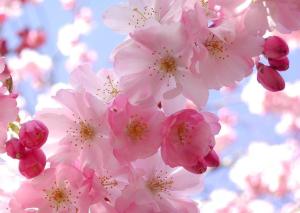 bright sunshine of March, April, and May. The summer’s burning rays and burdensome heat have not yet arrived. Spring is a delightful time!!!!!!!!
bright sunshine of March, April, and May. The summer’s burning rays and burdensome heat have not yet arrived. Spring is a delightful time!!!!!!!!
Spring seems to bring a rebirth to all of nature. The blossoms arrive, the yellow daffodils and tulips show their colors, and the trees begin to display the light green shades of new leaves. Our gardens begin to show signs of new life as the vegetables rise from the soil. Spring means rebirth, not only for human creation, but for the animals of the land, sea and sky as well
Springtime causes us think of spiritual things. First, the way God wants to bring every thing to a place of regeneration, something that we call the new birth. The resurrection of life is something special to look forward to, and the glorious newness of springtime is a reminder of this coming reality! The freshness of springtime…resurrection after a previous death…all of these combine to fill my heart with joy and hope.
 Look at the Jewish holiday of Passover – a celebration of liberation. Consider Easter – the resurrection of Christ. Both religions evolved from the spiritual traditions that preceded them. As they developed, they embraced rituals of celebration that marked the turn of season from hibernating, grey winter to lively, colorful spring. Just as Jesus rose from the tomb on Easter Sunday, the entire world comes to life with renewal and rebirth at this time of year and brings new hope to us all.
Look at the Jewish holiday of Passover – a celebration of liberation. Consider Easter – the resurrection of Christ. Both religions evolved from the spiritual traditions that preceded them. As they developed, they embraced rituals of celebration that marked the turn of season from hibernating, grey winter to lively, colorful spring. Just as Jesus rose from the tomb on Easter Sunday, the entire world comes to life with renewal and rebirth at this time of year and brings new hope to us all.
Spring is one of the four seasons, coming after the winter, but yet before summer. Just as with anything, the definition of spring can vary according to local climate, cultures and customs. When it is spring in the northern hemisphere, it will be autumn (fall) in the southern hemisphere. With the spring equinox, days are close to 12 hours longthe length of each day length gradually increasing as the season progresses. Spring and “springtime” refer to the season, and also to ideas of rebirth, rejuvenation, renewal, resurrection, and regrowth, with festivals such as Carnival, Easter and Holi are celebrated at this time.
Holi is a religious spring festival that is celebrated by the Hindus as a festival of colours, and is primarily observed in India and Nepal,  as well as by the minority Hindus in Pakistan as well as Bangladesh. Holi is observed also in countries that have a large Indic diaspora population that follow Hinduism in countries such as Malaysia, Suriname, South Africa, Trinidad and Tobago, Fiji, the United States and several other countries. Holi is of particular significance in the Braj region, which includes locations connected to Lord Krishna, Vrindavan, Mathura, Nandagon and Barsana, all of which become tourist destinations during the season of Holi. As per the Hindu calendar, Holi is celebrated on the Phalgun Purnima which comes in February or March in the Gregorian Calendar.
as well as by the minority Hindus in Pakistan as well as Bangladesh. Holi is observed also in countries that have a large Indic diaspora population that follow Hinduism in countries such as Malaysia, Suriname, South Africa, Trinidad and Tobago, Fiji, the United States and several other countries. Holi is of particular significance in the Braj region, which includes locations connected to Lord Krishna, Vrindavan, Mathura, Nandagon and Barsana, all of which become tourist destinations during the season of Holi. As per the Hindu calendar, Holi is celebrated on the Phalgun Purnima which comes in February or March in the Gregorian Calendar.
Carnival is seen as a communal celebration, especially the religious celebration in Catholic countries that takes place just before Lent (seen as a time of prayer, penance, preparation for or recollection of baptism, as well as preparing for the celebration Easter. Since early times carnivals have been accompanied by parades, masquerades, pageants, and other forms of revelry all have origins in pre-Christian pagan rites, particularly fertility rites that were connected with the coming of spring and the rebirth of vegetation. One of the first recorded instances of an annual spring festival is the festival of Osiris in Egypt; which commemorated the renewal of life brought about by the yearly 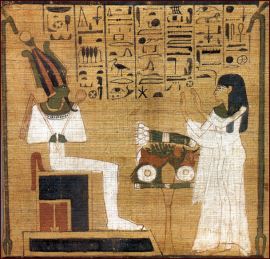 flooding of the Nile. In Athens, during the 6th century B.C., a yearly celebration in honor of the god Dionysus was the first recorded instance of the use of a float. It was during the Roman Empire that carnivals reached an unparalleled peak of civil disorder and licentiousness. The major Roman carnivals were the Bacchanalia, the Saturnalia, and the Lupercalia. In Europe the tradition of spring fertility celebrations persisted well into Christian times, where carnivals reached their peak during the fourteenth and fifteenth centuries. Because carnivals are deeply rooted in pagan superstitions and the folklore of Europe, the Roman Catholic Church was unable to stamp them out and finally accepted many of them as part of church activity. The immediate consequence of church influence may be seen in the medieval Feast of Fools, which included a mock Mass and a blasphemous impersonation of church officials. Eventually, however, the power of the church made itself felt, and the carnival was stripped of its most offending elements. The church succeeded in dominating the activities of the carnivals, and eventually they became directly related to the coming of Lent. In more recent times, the term carnival has also been loosely applied to include local festivals, traveling circuses, bazaars, and other celebrations of a joyous nature, regardless of their purpose or their season.
flooding of the Nile. In Athens, during the 6th century B.C., a yearly celebration in honor of the god Dionysus was the first recorded instance of the use of a float. It was during the Roman Empire that carnivals reached an unparalleled peak of civil disorder and licentiousness. The major Roman carnivals were the Bacchanalia, the Saturnalia, and the Lupercalia. In Europe the tradition of spring fertility celebrations persisted well into Christian times, where carnivals reached their peak during the fourteenth and fifteenth centuries. Because carnivals are deeply rooted in pagan superstitions and the folklore of Europe, the Roman Catholic Church was unable to stamp them out and finally accepted many of them as part of church activity. The immediate consequence of church influence may be seen in the medieval Feast of Fools, which included a mock Mass and a blasphemous impersonation of church officials. Eventually, however, the power of the church made itself felt, and the carnival was stripped of its most offending elements. The church succeeded in dominating the activities of the carnivals, and eventually they became directly related to the coming of Lent. In more recent times, the term carnival has also been loosely applied to include local festivals, traveling circuses, bazaars, and other celebrations of a joyous nature, regardless of their purpose or their season.
The Easter Season –Easter is the oldest Christian holiday, but how much of the most public and common celebrations of Easter today 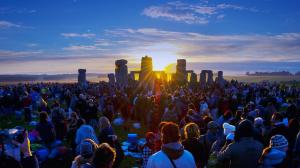 remain Christian in nature?Celebrating the beginning of spring may be among the oldest holidays in human culture, the spring equinox is the end of winter and beginning of spring. Biologically and culturally, it represents for northern climates the end of a “dead” season and the rebirth of life, as well as the importance of fertility and reproduction.
remain Christian in nature?Celebrating the beginning of spring may be among the oldest holidays in human culture, the spring equinox is the end of winter and beginning of spring. Biologically and culturally, it represents for northern climates the end of a “dead” season and the rebirth of life, as well as the importance of fertility and reproduction.
Fertility and Rebirth in the Spring:Most cultures around the Mediterranean are believed to have had their own spring festivals: whereas in the north the vernal equinox is a time for planting, around the Mediterranean the vernal equinox is a time when the summer crops begin to sprout. This is an important sign of why it has always been a celebration of new life and a triumph of life over death.
Pagan Elements of Modern Easter Celebrations:The name “Easter” comes possibly from an Anglo-Saxon lunar goddess, on whose feast day was held on the first full moon following the vernal equinox — a similar calculation as is used for Easter among Western Christians. On this date the goddess is believed to mate with the solar god, conceiving a child who would be born 9 months later on Yule, the winter solstice which falls on December 21st.
Two of her important symbols were the hare (both because of its fertility and because ancient people saw a hare in the full moon) and the egg, which symbolized the growing possibility of new life. Each of these symbols continues to play an important role in modern celebrations of Easter. Curiously, they are also symbols which Christianity has not fully incorporated into its own mythology. Other symbols from other holidays have been given new Christian meanings, but attempts to do the same have failed.
American Christians continue to generally celebrate Easter as a religious holiday, but public references to Easter almost never include any religious elements.Because aspects of Easter are shared by both Christians and non-Christians, they constitute the common cultural recognition of Easter — the specifically religious celebrations of Christians belong to them alone and are not part of the wider culture. The shift of religious elements away from the general culture and into Christians churches has been occurring over many decades and isn’t quite complete.
 In some regions the astronomical March equinox (generally between the 19th and 20th) and known as March equinox and is thought to mark the first day of spring, and the Northern solstice (June 21st) is known as the first day of summer. In other regions, the equinox is taken as mid-spring.
In some regions the astronomical March equinox (generally between the 19th and 20th) and known as March equinox and is thought to mark the first day of spring, and the Northern solstice (June 21st) is known as the first day of summer. In other regions, the equinox is taken as mid-spring.
In South America, the Tupi-Guarani calendar, counted 365 days, plus a fourth part of a day, needing no extra day every four years. The beginning of the solar year was marked by the rising of the M25 Constellation in the horizon, which occurs between June 5 and June 11 in this part of the world. For these native people, the four seasons were clearly identified by the solstices and equinoxes. The trajectory of the Sun throughout the year was divided into “The New Age” (Ara Pyau) and “The Old Age” (Ara Ymã). Ara Pyau was spring and summer, and Ara Ymã was autumn and winter. This type of calendar, had no graphed or written form, marked activities such as hunting, fishing, planting, harvesting and religious rituals.
In East Asian Solar term, spring begins on 4 February and ends on 5 May. Similarly, according to the Celtic tradition, which is based solely on daylight and the strength of the noon sun, spring begins in early February (near Candlemas) and continues until early May.
According to another tradition in the United States, February 2nd, USA, 2 February, Candlemas, can be regarded as the start of spring if it is mild (along the lines of Groundhog Day). The spring season in the United States can also be regarded as beginning on the day after President’s Day (the Tuesday after the third Monday in February) and ending on the Friday before Memorial Day weekend (the Friday before the last Monday in May, and the unofficial start of the summer season). In South Africa, Australia, and New Zealand, spring begins on 1 September, and has no relation to the vernal equinox. In Ireland spring traditionally starts on 1 February, St Brigid’s Day although Irish meteorologists consider the whole of February part of winter.
The beginning of spring is not always determined by fixed calendar dates. The phenological or ecological definition of spring relates to biological indicators; the blossoming of a range of plant species, and the activities of animals, or the special smell of soil that has reached the temperature for micro flora and fauna to flourish. It therefore varies according to the climate and according to the specific weather of a particular year. Most ecologists divide the year into six seasons that have no fixed dates. In addition to spring, ecological reckoning identifies an earlier separate prevernal (early or pre-spring) season between the hibernal (winter) and vernal (spring) seasons. This is a time when only the hardiest flowers like the crocus are in bloom, sometimes while there is still some snowcover on the ground.
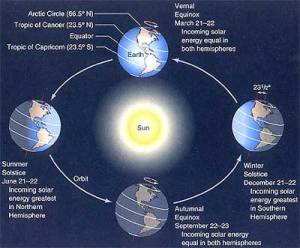 In spring, the Earth’s axis increases its tilt relative to the Sun, and the length of daylight rapidly increases for the relevant hemisphere. The hemisphere begins to warm significantly causing new plant growth to “spring forth,” giving the season its name. Snow, a normal part of winter, begins to melt, and streams swell with runoff. Frosts, if a normal part of winter, become less severe. In climates that have no snow and rare frosts, the air and ground temperatures increase more rapidly. Many flowering plants bloom this time of year, in a long succession sometimes beginning when snow is still on the ground, continuing into early summer. In normally snowless areas “spring” may begin as early as February (Northern Hemisphere) heralded by the blooming of deciduous magnolias, cherries, and quince, or August (Southern Hemisphere) in the same way. Subtropical and tropical areas have climates better described in terms of other seasons, e.g. dry or wet, or monsoonal, or cyclonic.
In spring, the Earth’s axis increases its tilt relative to the Sun, and the length of daylight rapidly increases for the relevant hemisphere. The hemisphere begins to warm significantly causing new plant growth to “spring forth,” giving the season its name. Snow, a normal part of winter, begins to melt, and streams swell with runoff. Frosts, if a normal part of winter, become less severe. In climates that have no snow and rare frosts, the air and ground temperatures increase more rapidly. Many flowering plants bloom this time of year, in a long succession sometimes beginning when snow is still on the ground, continuing into early summer. In normally snowless areas “spring” may begin as early as February (Northern Hemisphere) heralded by the blooming of deciduous magnolias, cherries, and quince, or August (Southern Hemisphere) in the same way. Subtropical and tropical areas have climates better described in terms of other seasons, e.g. dry or wet, or monsoonal, or cyclonic.
Often the cultures have locally defined names for seasons which have little equivalence to the terms originating in Europe. Many temperate areas have a dry spring, and wet autumn (fall), which brings about flowering in this season more consistent with the need for water as well as warmth. Subarcticareas may not experience “spring” at all until May or even June.
While spring is a result of the warmth caused by the changing orientation of the Earth’s axis relative to the Sun, the weather in many parts of the world is overlain by events which appear very erratic taken on a year-to-year basis. The rainfall in spring (or any season) follows trends more related to longer cycles or events created by ocean currents and ocean temperatures. Good and well-researched examples are the El Nino effect and the Southern Oscillation Index.
Unstable weather may more often occur during spring, when warm air begins on occasions to invade from lower latitudes, while cold 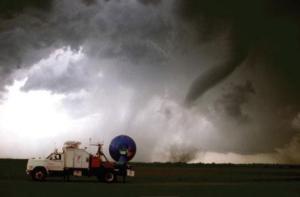 air is still pushing on occasions from the Polar Regions. Flooding is also most common in and near mountainous areas during this time of year because of snowmelt, accelerated by warm rains. In the United States, Tornado Alleyis most active this time of year, especially since the Rocky Mountains prevent the surging hot and cold air masses from spreading eastward and instead force them into direct conflict. Besides tornadoes, super cell thunder storms can also produce dangerously large hail and very high winds, for which a severe thunderstorm warning or tornado warning is usually issued. Even more so than in winter, the jet streams play an important role in unstable and severe weather in the springtime in the Northern Hemisphere.
air is still pushing on occasions from the Polar Regions. Flooding is also most common in and near mountainous areas during this time of year because of snowmelt, accelerated by warm rains. In the United States, Tornado Alleyis most active this time of year, especially since the Rocky Mountains prevent the surging hot and cold air masses from spreading eastward and instead force them into direct conflict. Besides tornadoes, super cell thunder storms can also produce dangerously large hail and very high winds, for which a severe thunderstorm warning or tornado warning is usually issued. Even more so than in winter, the jet streams play an important role in unstable and severe weather in the springtime in the Northern Hemisphere.
In recent decades season creep has been observed, which means that many phenological signs of spring are occurring earlier in many regions by a couple of days per decade.
Spring is seen as a time of growth, renewal, of new life (both plant and animal) being born. The term is also used more generally as a metaphor for the start of better times, as in the Prague Spring in the Southern Hemisphere is different in several significant ways to that of the Northern Hemisphere. This is because: there is no land bridge between Southern Hemisphere countries and the Antarctic zone capable of bringing in cold air without the temperature-mitigating effects of extensive tracts of water; the vastly greater amount of ocean in the Southern Hemisphere at all latitudes; at this time in Earth’s geologic history the Earth has an orbit which brings it in closer to the 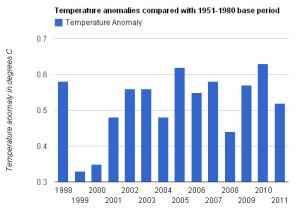 Southern Hemisphere for its warmer seasons; there is a circumpolar flow of air (the roaring 40s and 50s) uninterrupted by large land masses; no equivalent jet streams; and the peculiarities of the reversing ocean currents in the Pacific.
Southern Hemisphere for its warmer seasons; there is a circumpolar flow of air (the roaring 40s and 50s) uninterrupted by large land masses; no equivalent jet streams; and the peculiarities of the reversing ocean currents in the Pacific.
The spring season is full of transformations. The temperature rises to a more bearable degree, opposing Mother Nature’s last few months of freezing surroundings. The leaves we saw fall and flowers we saw wilt are now budding into lush, green, picture-perfect plants. Aside from the weather’s transformations that occur in the spring season, we are transforming our lives, too.
When spring rolls into our lives, we start to pick up the slack that winter instilled inside us of becoming sloths. TheNew Year’s resolution to join the gym starts being enforced, so you’re sure to have your bikini bod back in time for vacation. No more lounging on the couch all day watching football — in the spring you can gather friends together at the park for your own game.
Spring is a season in limbo between the winter and summer months, so nothing is absolute about the weather. You should keep an umbrella, rain jacket and coat with you in your car at all times, ready for whatever weather situations spring may throw your way.
Spring may have its drawbacks to our health with fluctuating allergies in the changing of seasons, but overall it is a positive season of new beginnings in weather, agriculture and self-awareness to take care of ourselves, and our surroundings. For the same reason that our bodies are temples we must preserve, our earth and environment need constant surveillance and the utmost care, too. Spring helps us to realize lessons as precious as this, where we learn the importance of embracing and adapting to change over time.
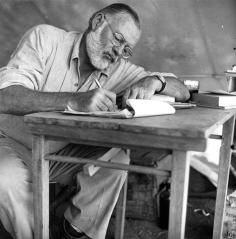
In many communities in the United States, once the weather starts to become nicer families get out in their yards and rake dead leaves, branches from behind bushes, trim bushes and branches from trees, plant new flowering bushes and plants/gardens, and spruce up the appearance of the home on the outside. Inside the home there is another form of spring cleaning going on. Closets are cleaned out, clothes and other items that that are no longer needed are donated to charity, or the family elects to have a yard sale, and thenwould donate the remaining items to charity.
Also in the community many neighbors get together to clean up parks, trails, streams and more to brighten up their towns. Even churches as well as other establishments do the same thing around their environs, and many people work together to assist the elderly and disabled that need work around their home and in the yard. Not necessary only in the spring, but all through the year.
It’s quite interesting to note that in the spring, as well as in the nicer weather I’ve seen many artists in different locations sketching or painting scenes, some of which are commissioned pieces or these sketches and/or paintings will become part of a larger showing of their work and interested patrons will be able purchase the work. They even have pieces of their work with them while they are painting/sketching so that the tourist/visitor can see them and buy them directly without going through a middleman.
 Even writers and poets seem to be more prevalent in the spring time than any other time of the year. It’s quite possible that between writers/poets/ artists/sculptors and many artisans spring brings a newer reality new awareness/new creativity to their art as well as their work, it’s just as if they have been reborn as well.
Even writers and poets seem to be more prevalent in the spring time than any other time of the year. It’s quite possible that between writers/poets/ artists/sculptors and many artisans spring brings a newer reality new awareness/new creativity to their art as well as their work, it’s just as if they have been reborn as well.
In the spring, even love is renewed and reborn between couples together for a long time and those that are just starting out on love’s path. When it comes to true love, commitment is more than just monogamy. It’s the knowledge that your partner cares for you and has your back, no matter what the circumstances. People who are strongly committed to one another will, when faced with seemingly negative information about their partner, see only the positive.
Intimacy is a crucial component of all relationships, regardless of their nature. In order to know another, you need to share parts of yourself. This self-revealing behavior, when reciprocated, forms an emotional time this bond strengthens and even evolves, so that two people merge closer and closer together. Intimacy by itself if is a great friendship, but compiled with other things, it forms an equation for true love.
Spring is rebirth and delight and colour.
– Spring –
Spring knows well the workings of the wheel,
Past winters past and winters still to come.
Released from time, the moment spreads its wings;
Infinite, it leaves behind all things,
Neither here nor there, nor to nor from,
Grace reborn within what we call real.
Poet: Unknown
Kathy Kiefer
Andrea Bocelli remember in Portofino
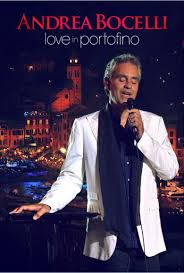 On my local Public Broadcasting Station (PBS) they have had on a concert that was recorded in beautiful Portofino, Italy showcasing the wide ranging talents of world renowned tenor Andrea Bocelli. The landscape, setting and music are breathtaking, spectacular and impressive. Set against a backdrop of lush rolling hills, the water (with people in boats) and persons at café’s and at windows of homes along the piazza, it gives such ambiance to this great concert. This concert focused on the romantic and love songs that Andrea sings quite wonderfully, with feeling and ease. While the person listening to the concert may not be familiar with the language the song is being sung in, just let the music and words speak to your very being as well as your soul moving you …..
On my local Public Broadcasting Station (PBS) they have had on a concert that was recorded in beautiful Portofino, Italy showcasing the wide ranging talents of world renowned tenor Andrea Bocelli. The landscape, setting and music are breathtaking, spectacular and impressive. Set against a backdrop of lush rolling hills, the water (with people in boats) and persons at café’s and at windows of homes along the piazza, it gives such ambiance to this great concert. This concert focused on the romantic and love songs that Andrea sings quite wonderfully, with feeling and ease. While the person listening to the concert may not be familiar with the language the song is being sung in, just let the music and words speak to your very being as well as your soul moving you …..
But at the same time, the spectacular views that are interspersed throughout the entire concert, serves as a travel log for visiting Portofino itself.
While classically trained, he is equally comfortable singing pop, religious, contemporary and just about any form of music. He puts his own unique stamp on a love song identified with Elvis Pressley “Love me Tender.” Even though the sun was still in the sky when the concert began, as it went down, lights outlining the homes and businesses were illuminated in light giving it more of a personable/romantic feel to it. As well as well as the stars shining and twinkling down from the sky. One thing struck me that I did not realize is how many languages he is able to sing in. He did songs in six (6) different languages (some with guest artists)… But being classically trained and familiarity with many languages, gives a good foundation for working with any genre of music.
One song that was at the end of the concert was sung in both Italian and English, and had special meaning for Portofino entitled “I FOUND MY LOVE IN PORTOFINO”. Even though the song has the connection to Portofino, you could be anywhere in the world to either sing or hear this song, and you are transported to this lovely city. But the final song (in Italian) was “My Way”, and Andrea definitely does it his way.
KATHY KIEFER TRAVELS
MY TRAVELS
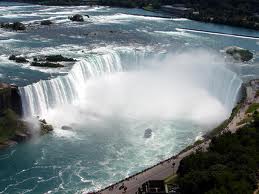
The first trip that I remember going on with my parents was to Niagara Falls, New York, and must have been about 2 ½ years old. I know my mom told me that they did not have a yellow rain coat that was small enough for me to wear, so we had to improvise with the smallest one that they had. I remember the different ways the water fell over the rocks and cliffs, some memory stayed with me all of my life because to this day, I like fountains, and water falls that are in so many places.
Growing up on Long Island, we went in to New York City often to events such as the Macy’s Thanksgiving Day Parade and the Easter Parade, also to go to the theatre as well as explore art museums. We also explored county and state historic sites on the Island. There were also trips upstate New York to visit my grandmother as well as aunts, uncles and cousins.
On one of the trips upstate, we took a side trip to Cooperstown, New York to the Baseball Hall of Fame which is a must see for any 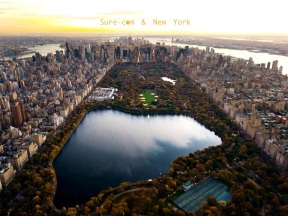 baseball fan (as my brother and I were and we still are). I have visited many interesting places in the State of New York growing up, such as going to the Adirondacks, Lake George, Sleepy Hollow (the setting for Washington Irving’s Headless Horseman).
baseball fan (as my brother and I were and we still are). I have visited many interesting places in the State of New York growing up, such as going to the Adirondacks, Lake George, Sleepy Hollow (the setting for Washington Irving’s Headless Horseman).
I was in Girl Scouts and one of the trips we took was up to the United States Military Academy at West Point. I also got to see the homes of Presidents Theodore Roosevelt and Franklin Delano Roosevelt who were also native New Yorkers. Plus visiting Albany (the state capitol).
When I was around 10 years old we took a family trip at Thanksgiving to Williamsburg, Virginia, while enroute there we stopped and paid respects at Arlington National Cemetery at the grave of President John F. Kennedy. (how ironic that many years later I would live in Washington, DC/Northern Virginia and be able to go to Arlington frequently to take pictures and more). Talk about time travel!!!
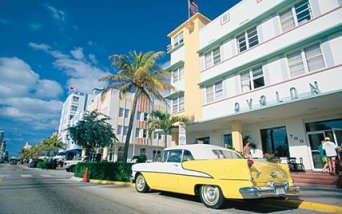 Another time when I was in the fifth grade we went to Miami Beach during Easter break from school. An irony to this trip that while we were there we actually saw my fifth grade teacher down there as well (who was staying at a different hotel). Totally unplanned!!!! Other trips I remember were going to Plymouth Village, Massachusetts (This living museum recreates Plymouth as it was in 1627, and does a great job at separating fact from the enduring (and completely inaccurate) legend of the First Thanksgiving. Historians and curators have paid great attention to detail, from the street plans to furniture, tools, and cooking equipment. Specially bred 17th-century livestock occupies the barns and pastures, and trained reenactors and artisans demonstrate how life was lived among the Pilgrims. In addition to information on the European colonists, visitors can find information on the Native American population at Hobbamock’s Homesite. Hobbamock, a Wampanoag Indian, lived with his family in Plymouth from 1621-1641, as part of a peace treaty agreement) and is the site of where the Pilgrims landed in the 1600’s from England as well as going to Salem, Massachusetts to visit the place where there were numerous witch trials of people accused of doing unchristian activities. (Three Historic Cemeteries. Salem has wonderful, historic cemeteries, including the Old Burying Point Cemetery on Charter Street, Howard Street Cemetery, and the Broad Street Cemetery. The Old Burying Point is the oldest cemetery in Salem, and in it you can see the graves of, among others, a Witch Trials judge, a Mayflower passenger, and architect Samuel McIntire. Cemeteries are open from dawn until dusk, and exploration is encouraged. Since 1626, when Conant arrived with the first settlers, Salem, Massachusetts has been attracting people from all points of the compass. Many come to visit and some decide to stay and make Salem their home.
Another time when I was in the fifth grade we went to Miami Beach during Easter break from school. An irony to this trip that while we were there we actually saw my fifth grade teacher down there as well (who was staying at a different hotel). Totally unplanned!!!! Other trips I remember were going to Plymouth Village, Massachusetts (This living museum recreates Plymouth as it was in 1627, and does a great job at separating fact from the enduring (and completely inaccurate) legend of the First Thanksgiving. Historians and curators have paid great attention to detail, from the street plans to furniture, tools, and cooking equipment. Specially bred 17th-century livestock occupies the barns and pastures, and trained reenactors and artisans demonstrate how life was lived among the Pilgrims. In addition to information on the European colonists, visitors can find information on the Native American population at Hobbamock’s Homesite. Hobbamock, a Wampanoag Indian, lived with his family in Plymouth from 1621-1641, as part of a peace treaty agreement) and is the site of where the Pilgrims landed in the 1600’s from England as well as going to Salem, Massachusetts to visit the place where there were numerous witch trials of people accused of doing unchristian activities. (Three Historic Cemeteries. Salem has wonderful, historic cemeteries, including the Old Burying Point Cemetery on Charter Street, Howard Street Cemetery, and the Broad Street Cemetery. The Old Burying Point is the oldest cemetery in Salem, and in it you can see the graves of, among others, a Witch Trials judge, a Mayflower passenger, and architect Samuel McIntire. Cemeteries are open from dawn until dusk, and exploration is encouraged. Since 1626, when Conant arrived with the first settlers, Salem, Massachusetts has been attracting people from all points of the compass. Many come to visit and some decide to stay and make Salem their home.
It may be most widely known as the site of the Salem witchcraft trials of 1692, but this colorful, coastal city has much to offer both residents and visitors: a culturally diverse population, a rich maritime heritage, an impressive display of historic architecture and amazing stories that span almost four centuries.)
We also went to Boston, Massachusetts. I remember visiting Faneuil Hall and other historic places, following the Freedom Trail, and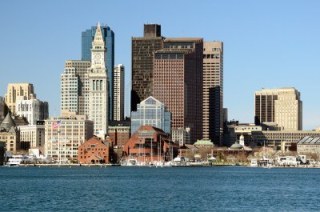 even riding in a Swan Boat. And even a trip to historic Sturbridge Village!!!!. (Old Sturbridge Village is one of the country’s oldest and largest living history museums, depicting early New England life from 1790-1840 with historians in costume, antique buildings, water-powered mills, and a working farm. Visitors can view antiques, meet heritage breed animals, and enjoy hands-on crafts. The Village is open year-round, but hours change seasonally).
even riding in a Swan Boat. And even a trip to historic Sturbridge Village!!!!. (Old Sturbridge Village is one of the country’s oldest and largest living history museums, depicting early New England life from 1790-1840 with historians in costume, antique buildings, water-powered mills, and a working farm. Visitors can view antiques, meet heritage breed animals, and enjoy hands-on crafts. The Village is open year-round, but hours change seasonally).
We went to Stowe, Vermont and visited the Von Trapp Family Lodge (the Von Trapps of Sound of Music fame). This location is reminiscent of the Salzburg area of Austria where they were from and that is what drew them to the Stowe area when they emigrated here. On the same trip, we also went to other areas in the State of Vermont, went to New Hampshire and into Maine where I remember going to Bar Harbor (a small island) and seeing lobsters being brought in as well as other fish being brought in by the fishermen (reminiscent of seeing fishermen bringing in their daily catch where I grew up in Bay Shore/Brightwaters). I can safely say that I have been to every state on the east coast of the United States.
 Another trip I remember was on a summer vacation from school, we drove down to Florida (possibly either 1972 or 1973) going first to the Tampa/St. Petersburg area where we went to Bush Gardens. Then we drove to Orlando where we went to Walt Disney World (which was only the Magic Kingdom at the time). A few places that I enjoyed was (and is) the Haunted Mansion, the Hall of the Presidents and the Small World ride. There are other places at the Magic Kingdom that I enjoyed as well. I have also been to the Outer Banks and Kitty Hawk, North Carolina. Kitty Hawk is the spot where the Wright Brothers took the first airplane flight. The original Wright Flyer is in the National Air and Space Museum which is a part of the Smithsonian Institution. A replica is in the museum at Kitty Hawk that commemorates this historic event. In Ocean City, Maryland I have gone parasailing numerous times, each time I’ve gone up higher. I have plans to go sky diving when the weather is nicer. And have been to numerous historic sites and towns in Virginia as well.
Another trip I remember was on a summer vacation from school, we drove down to Florida (possibly either 1972 or 1973) going first to the Tampa/St. Petersburg area where we went to Bush Gardens. Then we drove to Orlando where we went to Walt Disney World (which was only the Magic Kingdom at the time). A few places that I enjoyed was (and is) the Haunted Mansion, the Hall of the Presidents and the Small World ride. There are other places at the Magic Kingdom that I enjoyed as well. I have also been to the Outer Banks and Kitty Hawk, North Carolina. Kitty Hawk is the spot where the Wright Brothers took the first airplane flight. The original Wright Flyer is in the National Air and Space Museum which is a part of the Smithsonian Institution. A replica is in the museum at Kitty Hawk that commemorates this historic event. In Ocean City, Maryland I have gone parasailing numerous times, each time I’ve gone up higher. I have plans to go sky diving when the weather is nicer. And have been to numerous historic sites and towns in Virginia as well.
I got to travel to many places while I was working for the United States Department of Justice; the first trip that I went on was to San 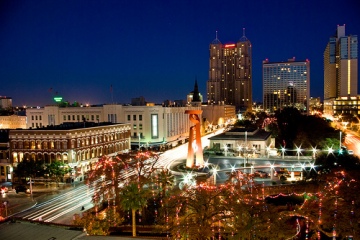 Antonio, Texas for a week long paralegal conference. It was exciting to be there and stay in a hotel along the fabled River Walk, where one can stroll and listen to local music, find wonderful shops and quaint cafes to eat and drink at. I also got to see close-up the Alamo which was originally Franciscan mission. I also had the opportunity to go to Sea World San Antonio.
Antonio, Texas for a week long paralegal conference. It was exciting to be there and stay in a hotel along the fabled River Walk, where one can stroll and listen to local music, find wonderful shops and quaint cafes to eat and drink at. I also got to see close-up the Alamo which was originally Franciscan mission. I also had the opportunity to go to Sea World San Antonio.
The next trip I went on was to Atlanta, Georgia, where I was helping at a workshop for Criminal Attorneys. In my spare time, I went to underground Atlanta located at Five Point, this is an area of old Atlanta that sustained major damage during the Civil War when Atlanta got burned by the Northern Soldiers. I was fortunate to be able to go to the Margaret Mitchell House & Museum and the typewriter she used to write “Gone With the Wind” plus some other items that were her inspiration for the novel (Gone With the Wind is my all-time favorite book and movie). Also spent time exploring other parts of Atlanta and outside the city as well. It was fascinating to be in such a place.
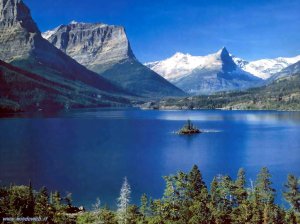 I have been to Billings, Montana for pre-trial conferences and meeting with witnesses. I remember one of the times there for meetings it was in holiday season and it was snowing. There was to be a holiday street festival and one of the highlights for me was the hot roasted chestnuts which I hadn’t had in years. On one of the trips to Billings, I had the opportunity to drive to the National Park Site of Little Big Horn, where American troops fought the local Indian Tribe, and the American soldiers lost their lives, including their leader, General George Armstrong Custer (he was a West Point Graduate and he is buried back at the Academy).
I have been to Billings, Montana for pre-trial conferences and meeting with witnesses. I remember one of the times there for meetings it was in holiday season and it was snowing. There was to be a holiday street festival and one of the highlights for me was the hot roasted chestnuts which I hadn’t had in years. On one of the trips to Billings, I had the opportunity to drive to the National Park Site of Little Big Horn, where American troops fought the local Indian Tribe, and the American soldiers lost their lives, including their leader, General George Armstrong Custer (he was a West Point Graduate and he is buried back at the Academy).
I made numerous trips to Denver, Colorado, went to Colorado Springs, Colorado (where the training center and Offices for the 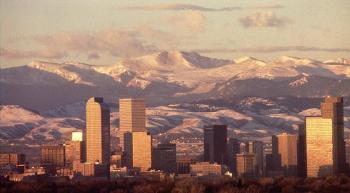 UnitedStates Olympic Committee is located as well as Pike’s Peak). I found and interesting mining town called Georgetown which still has a working mine. I found in Denver, the Molly Brown House and Museum. Molly Brown may be better known as the Unsinkable Molly Brown. She got the nickname Unsinkable for having survived the Colorado floods, and the sinking of the Titanic. She rose up from poverty to rich and was never go backwards. The house and museum give the visitor a glimpse of a time and era gone by. And to show how the rich and neuvorich lived.
UnitedStates Olympic Committee is located as well as Pike’s Peak). I found and interesting mining town called Georgetown which still has a working mine. I found in Denver, the Molly Brown House and Museum. Molly Brown may be better known as the Unsinkable Molly Brown. She got the nickname Unsinkable for having survived the Colorado floods, and the sinking of the Titanic. She rose up from poverty to rich and was never go backwards. The house and museum give the visitor a glimpse of a time and era gone by. And to show how the rich and neuvorich lived.
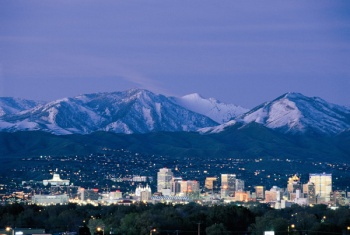 I went to Salt Lake City, Utah for meetings and visited the Mormon Temple area, which was impressive even lit up at night, and felt fortunate to be able to go to a concert of the Mormon Tabernacle Choir while I was there. ON a subsequent trip to Elko, Nevada I had the opportunity to drive back from Elko to Salt Lake City and to drive along the Great Salt Lake and Bonneville Salt Flats.
I went to Salt Lake City, Utah for meetings and visited the Mormon Temple area, which was impressive even lit up at night, and felt fortunate to be able to go to a concert of the Mormon Tabernacle Choir while I was there. ON a subsequent trip to Elko, Nevada I had the opportunity to drive back from Elko to Salt Lake City and to drive along the Great Salt Lake and Bonneville Salt Flats.
I have also been to Reno, Nevada (for meetings, not to gamble); Phoenix, Arizona; Albuquerque, New Mexico; Sedona, Arizona, Norfolk, Virginia, Los Angeles, California; and San Francisco, California. I remember going to Old Town Albuquerque and getting Turquoise jewelry, and pottery. In San Francisco riding the Cable Cars, going to Fisherman’s Wharf, Nob Hill, and Ghirardelli Square and even crossing the Golden Gate Bridge. I’ve even been to the Grand Canyon.
The first trip overseas that I took was to Denmark, seeing the sights such as Tivoli Gardens, the Little Mermaid statute, spending time  exploring the fascinating capitol Denmark. Visiting the home of Karen Blixen (the author of Out of Africa) and the gardens behind the house, going to Ellsinore Castle (which is the setting for Shaskespere’s Hamlet, other parks and castles plus so much more. In addition to visiting with famiy while I was there. I was also able to take a boat tour of the canals of Copenhagen. Plus checking out the stores such as Royal Copenhagen and others. And shopping along the Stroyget for bargains. There are many beautiful parks and many castles all around this wonderful country waiting to be explored and discovered.
exploring the fascinating capitol Denmark. Visiting the home of Karen Blixen (the author of Out of Africa) and the gardens behind the house, going to Ellsinore Castle (which is the setting for Shaskespere’s Hamlet, other parks and castles plus so much more. In addition to visiting with famiy while I was there. I was also able to take a boat tour of the canals of Copenhagen. Plus checking out the stores such as Royal Copenhagen and others. And shopping along the Stroyget for bargains. There are many beautiful parks and many castles all around this wonderful country waiting to be explored and discovered.
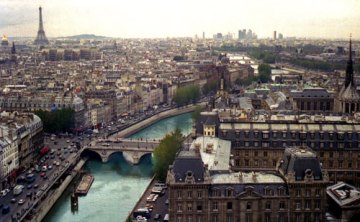 I had a few hour layover in Switzerland and got to do a little exploring in Zurich, plus on my next overseas, had a little layover in Paris, enroute home from Italy. My first stop in Italy was Rome where I spent several days exploring the eternal city. Going to the Vatican and St. Peter’s Basilica was a thrill in itself (the seat of the Catholic Church) to be able to stand in the same place as the Pope was amazing. And to see it with my own eyes and close up!!!! Going to the Ruins and the Forum, The Trevi Fountain Borghese Gardens….and more. I took the train from Rome to Pisa one day, and went to the Leaning Tower of Pisa, and even got to see the Church of the Miracles while I was there. What an awesome experience that was, and an architectural wonder the Leaning Tower is and the detail on both the Tower and the church is beyond description. Pictures can’t do it adequate justice. I then took the train back to Rome.
I had a few hour layover in Switzerland and got to do a little exploring in Zurich, plus on my next overseas, had a little layover in Paris, enroute home from Italy. My first stop in Italy was Rome where I spent several days exploring the eternal city. Going to the Vatican and St. Peter’s Basilica was a thrill in itself (the seat of the Catholic Church) to be able to stand in the same place as the Pope was amazing. And to see it with my own eyes and close up!!!! Going to the Ruins and the Forum, The Trevi Fountain Borghese Gardens….and more. I took the train from Rome to Pisa one day, and went to the Leaning Tower of Pisa, and even got to see the Church of the Miracles while I was there. What an awesome experience that was, and an architectural wonder the Leaning Tower is and the detail on both the Tower and the church is beyond description. Pictures can’t do it adequate justice. I then took the train back to Rome.
From Rome I went to Verona for several days. Verona is the setting for three of Shakespeare’s plays: The Taming of the Shrew, Two 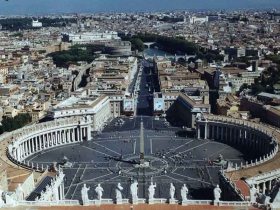 Gentlemen of Verona and Romeo and Juliet. Legend has it that one rubs the breast on the Statute of Juliet you will have good luck in love and in your life, the balcony at the Casa de Giulietta. The House of Romeo, Tomba di Giulietta, Piazza delle Erbe (since ancient times continues to be used as a vegetable and fruit market), Castel Vecchio, Piazza dei Signori, Piazza Bra, Corso Cavour. There are so many beautiful Chiesa’s (churches) in Verona as well as in Rome. Roman Theatre and so much more to see , experience and to do. Such a wonderful educational experience so much better than any textbook.
Gentlemen of Verona and Romeo and Juliet. Legend has it that one rubs the breast on the Statute of Juliet you will have good luck in love and in your life, the balcony at the Casa de Giulietta. The House of Romeo, Tomba di Giulietta, Piazza delle Erbe (since ancient times continues to be used as a vegetable and fruit market), Castel Vecchio, Piazza dei Signori, Piazza Bra, Corso Cavour. There are so many beautiful Chiesa’s (churches) in Verona as well as in Rome. Roman Theatre and so much more to see , experience and to do. Such a wonderful educational experience so much better than any textbook.
